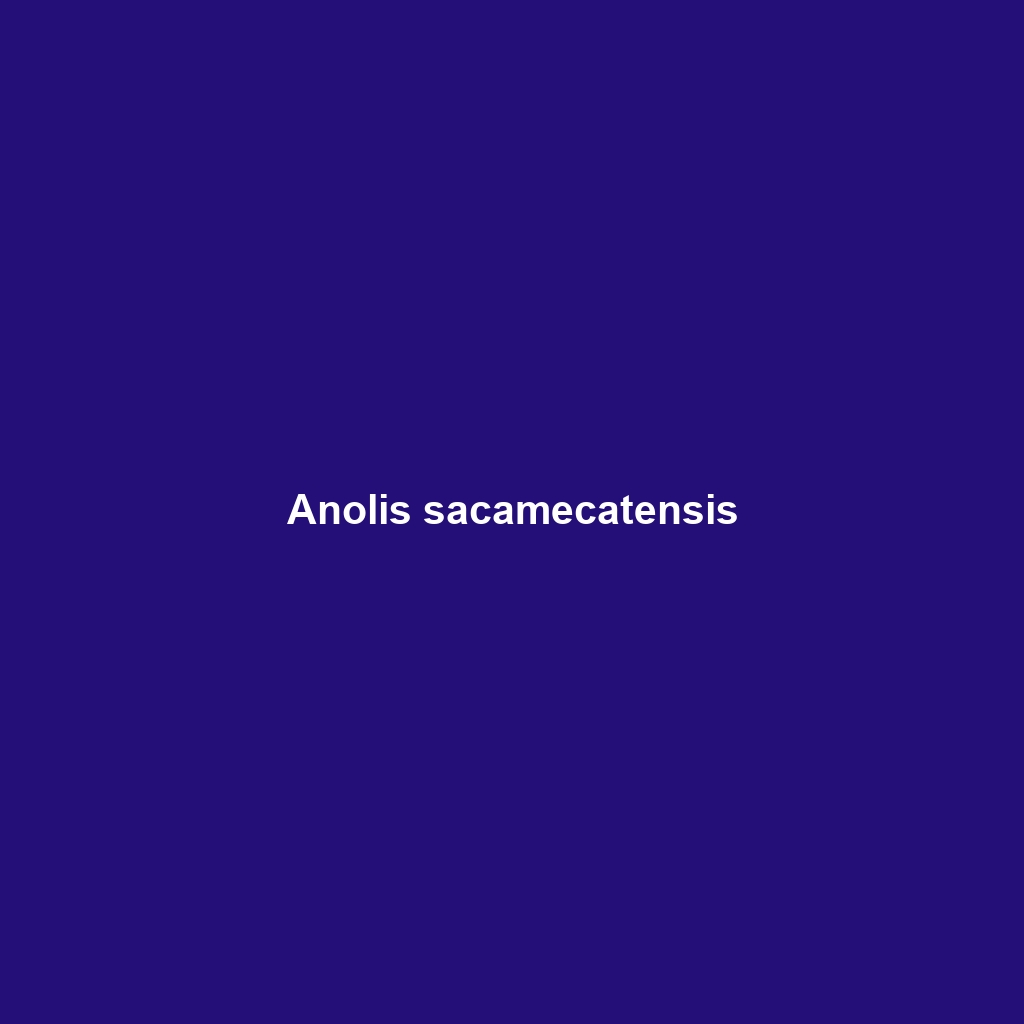Anolis sacamecatensis: A Comprehensive Species Description
Common Name: Anolis sacamecatensis
Scientific Name: Anolis sacamecatensis
Habitat
Anolis sacamecatensis, commonly known as the Sacamecatensis anole, is primarily found in the tropical forests and shrublands of Central America, particularly in the regions of Guatemala and Honduras. This species thrives in environments characterized by high humidity, dense foliage, and a warm climate, often inhabiting areas near streams and lowland forests. The Anolis sacamecatensis typically prefers living in trees and shrubs, allowing it to evade predators and access essential resources.
Physical Characteristics
The Anolis sacamecatensis is a medium-sized lizard, measuring approximately 4 to 6 inches in length, including its long tail. It exhibits a striking color palette, which can range from bright green to earthy browns, allowing it to blend seamlessly with its lush surroundings. This camouflage technique serves as a defense mechanism against predators. Distinctive features include a dewlap that varies in color and is typically displayed during mating rituals or territorial disputes, as well as elongated limbs that aid in climbing and jumping.
Behavior
This species is known for its arboreal habits, spending most of its time basking in sunlight on branches or leaves. Anolis sacamecatensis is diurnal, being most active during the daytime when it forages for food and interacts with other lizards. Males are particularly territorial and are known to engage in displays of dominance, showcasing their vibrant dewlaps. Their social structure is fascinating, as they maintain territories that may overlap with other individuals.
Diet
The diet of Anolis sacamecatensis consists mainly of insects, including crickets, ants, and beetles. This insectivorous diet plays a crucial role in controlling local insect populations. Additionally, they may consume smaller arthropods and, occasionally, plant matter, demonstrating a flexible feeding behavior. Their foraging techniques and preference for specific prey make them a significant component of the local food web.
Reproduction
During the breeding season, which typically occurs during the warmer months, male Anolis sacamecatensis engage in elaborate courtship displays to attract females. Females lay clutches of one to two eggs, which they bury in moist soil or leaf litter to provide optimal conditions for incubation. Hatchlings emerge approximately 6 to 8 weeks after laying, and they must quickly adapt to their environment to increase survival rates in the wild.
Conservation Status
The current conservation status of Anolis sacamecatensis is listed as vulnerable due to habitat loss from deforestation and urbanization. Protecting their natural habitat is essential for ensuring the survival of this species, which plays a significant role in the biodiversity of its ecosystem.
Interesting Facts
One fascinating attribute of Anolis sacamecatensis is its ability to change color slightly, aiding in camouflage against predators. Moreover, they exhibit social behaviors that include elaborate displays of dominance and elaborate mating rituals, making them a captivating subject for herpetologists and nature enthusiasts alike.
Role in Ecosystem
In the ecosystem, Anolis sacamecatensis plays a vital role as both a predator and prey. By controlling insect populations, these lizards contribute to maintaining ecological balance. They also serve as a food source for various birds and larger mammals, thus integrating into the food web and enriching the biodiversity of their habitats.
